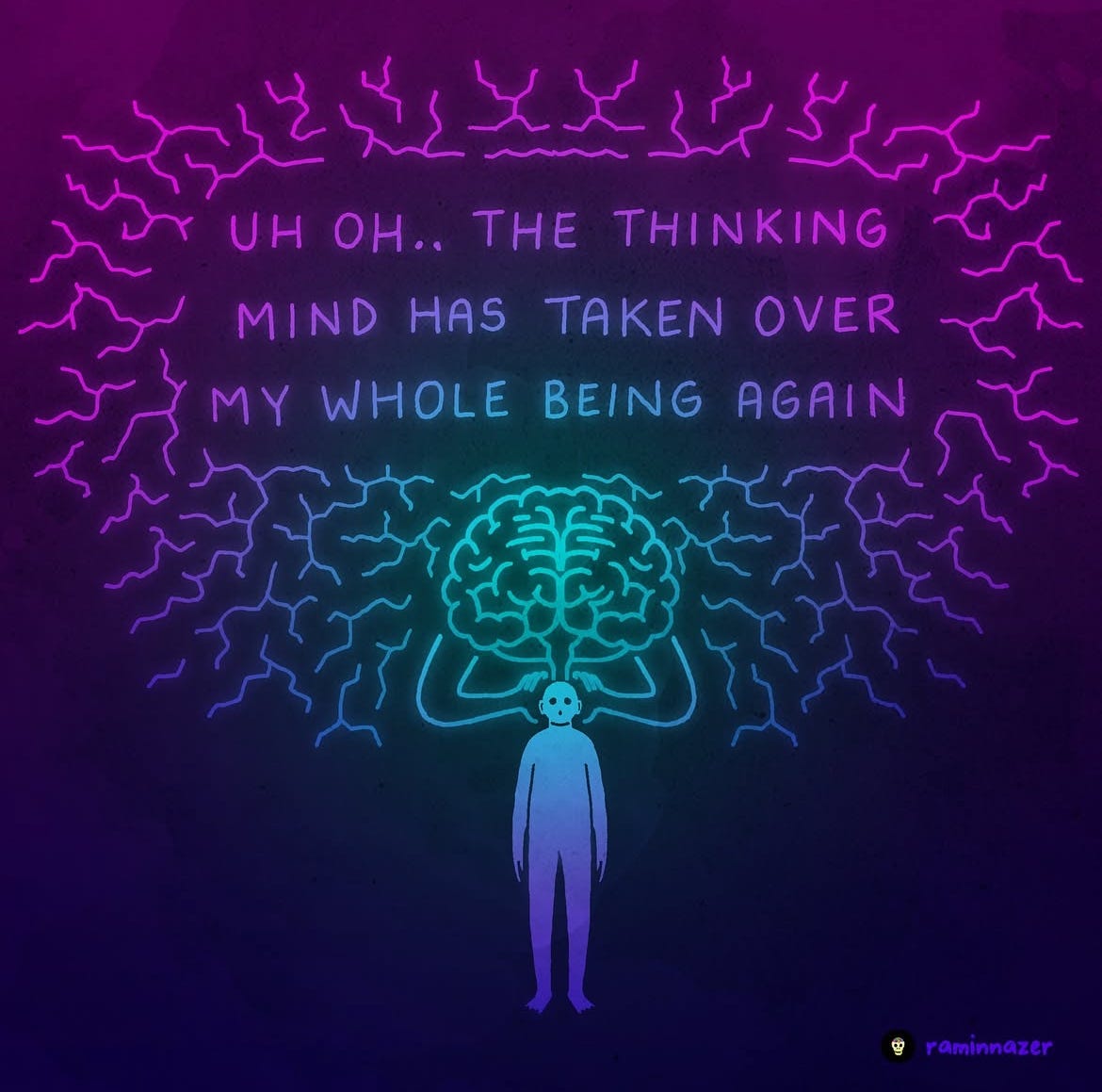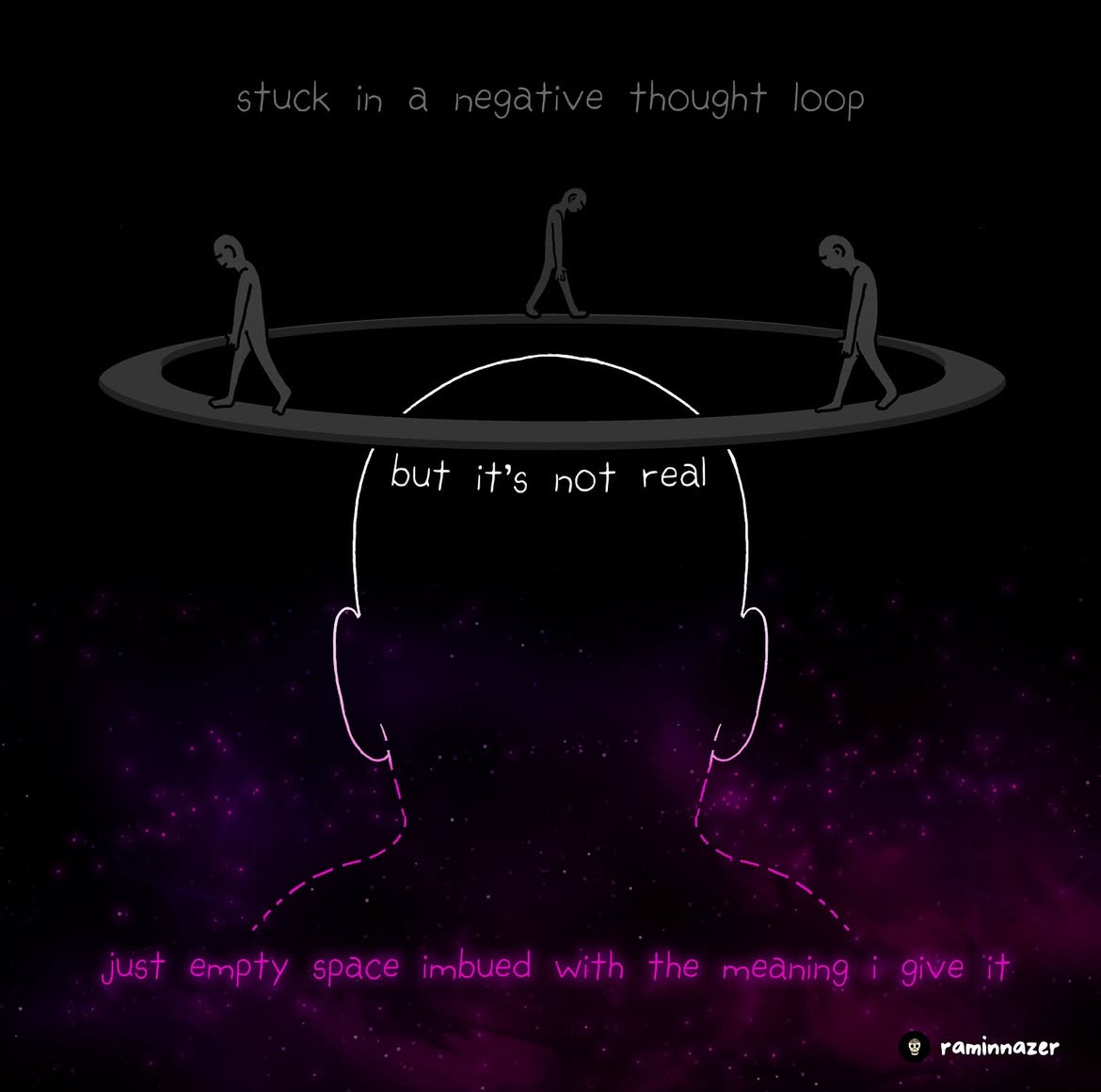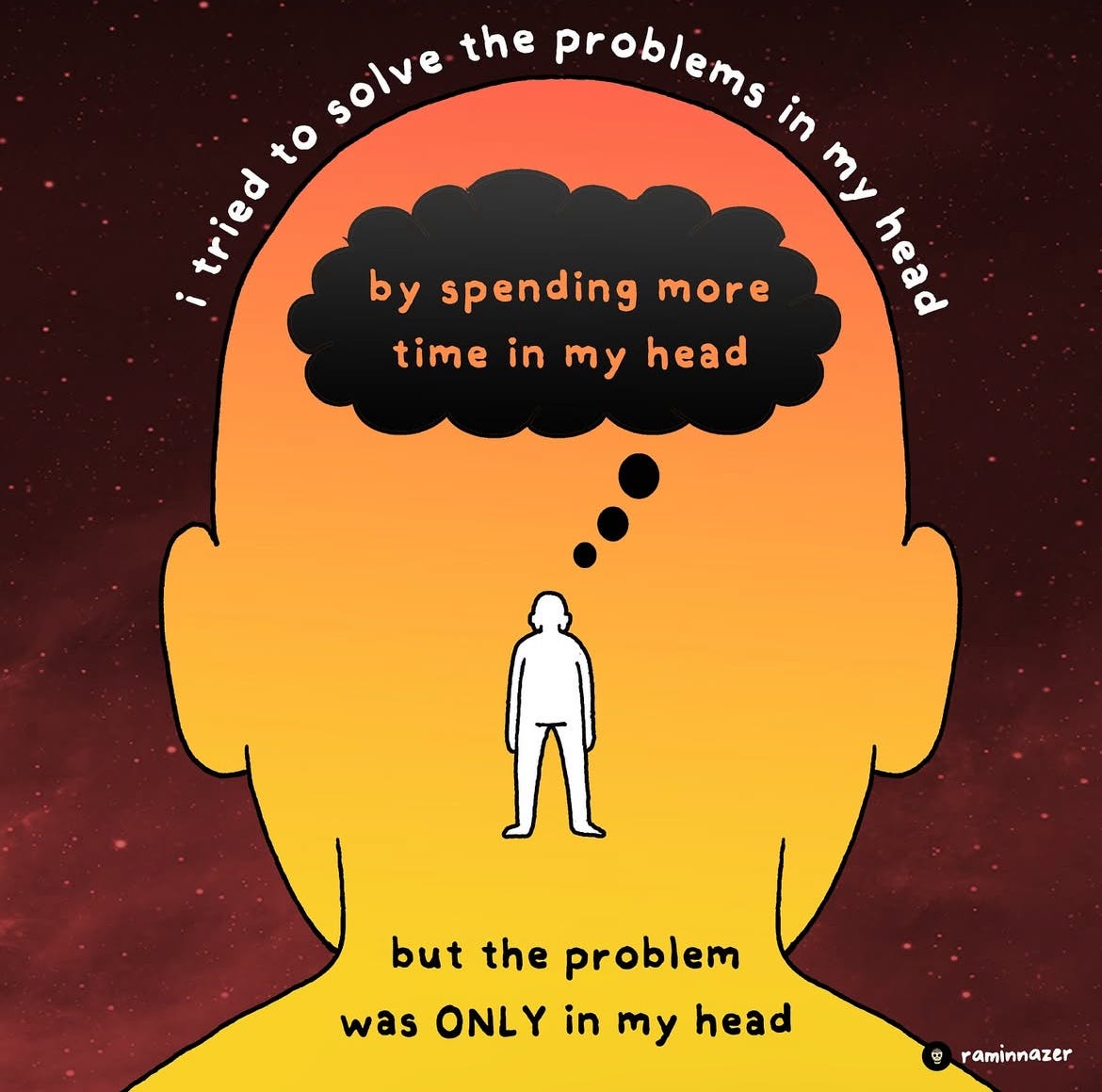The solution to all problems.
Win or learn.
So-called problems arise when we can’t perceive how to move through a situation.
In reality, there is no such thing as a problem—only states of consciousness in which we are incapable of seeing solutions.
All so-called problems are really just teachers. The more unilaterally we can adopt that mindset, the less we’ll suffer.
How We Don’t Learn From Problems
Oftentimes the thinking mind, known as the ego to some, becomes fascinated, or even obsessed with figuring out the answer to the teacher’s question.
That’s because the primary directive of the thinking mind is to attempt to attain to greater levels of contentment.
The thinking mind is convinced it can think its way to happiness in the same way a cat may become obsessed with a knotted ball of yarn—because it perceives there is some satisfaction to be had from untangling it.
When all you’ve got is a hammer, problems all look like nails.
Sometimes, the mind may even create the perception of a problem simply to justify its existence and give it something to do.
“Problems are all in your head.”
—Maharishi Mahesh Yogi
But so-called problems can’t be solved from the same level of thinking which created them.
How We Do Learn From Problems
In the Vedic worldview, knowledge is structured in consciousness. That means as we expand our consciousness through the purification of stresses, we gain greater and greater access to the knowledge of the laws of nature which exist in the unified field of Being underlying all forms and phenomena. This explains how solutions sometimes seem to magically present themselves, despite not being something we ever formally learned.
So rather than try to learn everything in the universe, we prefer to just get the new consciousness state—the one thing by which all else can be known.
“Problems are not solved on the level of problems. You don't solve darkness by analyzing darkness. You bring in light, and darkness simply disappears.”
—Maharishi Mahesh Yogi
Sometimes, it takes weeks, months or even years to attain to a sufficient state of consciousness to see certain solutions.
What this means then, is that we can’t see the solution to a problem until after we’re in the new consciousness state.
It’s why they say hindsight is 20/20.
So if you’re facing something you perceive to be a problem right now, thinking about it won’t solve anything.
But moving beyond thought is easier said than done.
The Solution To All Problems
And this is the ingenious simplicity with which Vedic Meditation works. Knowing that the thinking mind simply wants to attain to greater levels of contentment, we mentally repeat our personal bija mantra—a Sanskrit sound vibration that has a unique resonance with each thinker’s individual mind—so the mind follows the mantra, moving inward beyond the thought layer of the mind.
As we move inward mentally, the mind and body de-excite, and layers of deeply held stresses are dissolved, clearing the way for new insights and creative solutions outwardly.
The more we move beyond thinking with our eyes closed, the more easily we’ll be able to do so with our eyes open.
As in the micro, so in the macro.
P.S. All 50 of these letters I’ve written so far are primarily reminder to myself, written to help me synthesize the knowledge more completely at times when its relevant to me. I’m always learning too ;)
Let’s discuss these and other ideas during Collective Effervescence, our online group meditation series, this Sunday March 9 at 12PM ET. Drop in for meditation only (first 30 min) or stay for discussion + Q&A on this and other life topics from the Vedic perspective. Join the WhatsApp group to receive reminders 24 hours before each session, or use the below links to have all upcoming dates automatically sync to your calendar.
iCal / Google Calendar / Office 365 / Outlook / Outlook.com / Yahoo
More from the 2013-era today with SBTRKT and Jessie Ware.





